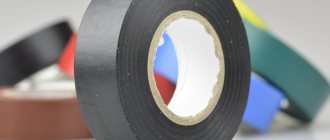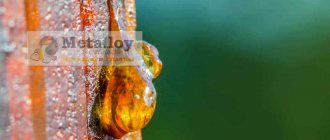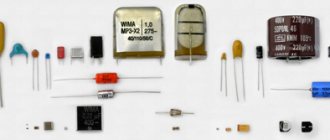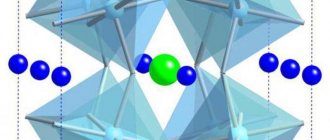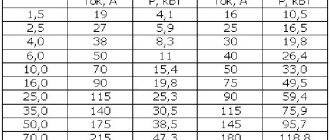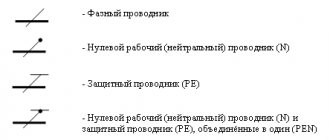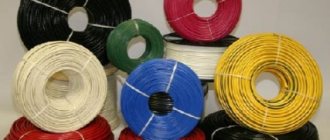The efficient and durable operation of electrical machines and installations directly depends on the state of the insulation for which electrical materials are used. They are characterized by a set of certain properties when placed in an electromagnetic field, and are installed in devices taking these indicators into account.
The classification of electrical materials allows us to divide into separate groups electrical insulating, semiconductor, conductor and magnetic materials, which are complemented by basic products: capacitors, wires, insulators and finished semiconductor elements.
Materials operate both in separate magnetic or electric fields with certain properties, and are exposed to several radiations simultaneously. Magnetic materials are conventionally divided into magnetic and weakly magnetic substances. Highly magnetic materials are most widely used in electrical engineering.
Materials Science
A material is a substance characterized by a different chemical composition, properties and structure of molecules and atoms from other objects. Matter is in one of four states: gaseous, solid, plasma or liquid. Electrical and structural materials perform various functions in an installation.
Conducting materials transmit the flow of electrons, dielectric components provide insulation. The use of resistive elements converts electrical energy into thermal energy; structural materials retain the shape of the product, for example, the housing. Electrical and structural materials necessarily perform not one, but several related functions, for example, the dielectric experiences loads during the operation of an electrical installation, which brings it closer to structural materials.
Electrical materials science is a science that deals with determining the properties and studying the behavior of a substance under the influence of electricity, heat, frost, magnetic field, etc. Science studies the specific characteristics necessary for the creation of electrical machines, instruments and installations.
Digital library
General engineering disciplines / Materials science, technology of structural materials / 1.1 Classification of materials used in electrical and radio engineering
Materials used for the manufacture of electrical equipment of any purpose and degree of complexity can be divided into two large groups: electrical and structural
.
Electrical materials
(ETM) are used for the production of elements (parts) used for assembling electronic circuits and ensuring the passage of electric current, its electrical insulation, generation, amplification, rectification, modulation, etc. Elements necessary to carry out these operations (wires, cables, waveguides, insulators, resistors, inductors, magnets, transformers, generators, diodes, transistors, thermistors, photoresistors, vacuum tubes, electromechanical converters, variconds, lasers, storage devices of electronic computers (computers), etc.), can be made only from electronic materials of a certain class, having very specific physical and chemical properties - electrophysical, mechanical, chemical. The quality, reliability and safety of the operation of this part and, consequently, the electrical installation as a whole will depend on the inherent properties of this material.
Construction materials
(KM) are used for the manufacture of load-bearing structures and auxiliary parts and assemblies, for example: steel rails, supports, consoles for the contact network of electrified railways, which carry not only mechanical loads, but also electrical ones; housings for electrical equipment that protect against mechanical loads; chassis on which the electrical circuit is mounted; scales, controls, etc.
When considering an average complexity electrical circuit, you can see that it consists of elements made from four main classes of electrical materials:
dielectric, semiconductor, conductor and magnetic.
According to their behavior in an electric field, ETMs are divided into three classes: dielectric, semiconductor and conductor. The values of their resistivity are respectively in the range: 10-8 – 10 -5, 10-6 – 108.107 – 10 17 Ohm-m, and the values of the band gap are respectively 0 – 0.05; 0.05 – 3 or more 3 eV. According to their behavior in a magnetic field, ETMs are divided into two classes: magnetic (strongly magnetic) and non-magnetic (weakly magnetic). The former include ferro- and ferrimagnets, and the latter – dia-, para- and antiferromagnets.
Dielectric materials
have the ability to polarize under the influence of an applied electric field and are divided into two subclasses: passive and active dielectrics.
Passive dielectrics
(or simply dielectrics) use:
1) to create electrical insulation of conductive parts - they prevent the passage of electric current in other, undesirable ways and are electrical insulating materials;
2) in electrical capacitors - they are used to create a certain electrical capacitance; in this case, their dielectric constant plays an important role: the higher this value, the smaller the dimensions and weight of the capacitors.
Active dielectrics
Unlike conventional ones, they are used for the manufacture of active elements (parts) of electrical circuits. Parts made from them are used to generate, amplify, modulate, and convert an electrical signal.
These include: ferroelectric and piezoelectric materials, electrets, phosphors, liquid crystals, electro-optical materials, etc.
Semiconductor materials
In terms of electrical conductivity, they occupy an intermediate position between dielectrics and conductors. Their characteristic feature is the significant dependence of electrical conductivity on the intensity of external energy influence: electric field strength, temperature, illumination, wavelength of incident light, pressure, etc. This feature is the basis for the operation of semiconductor devices: diodes, transistors, thermistors, photoresistors, strain gauges, etc.
Conductor materials
are divided into four subclasses:
1) highly conductive materials;
2) superconductors and cryoconductors;
3) materials of high (specified) resistance;
4) contact materials.
High conductivity materials
used where it is necessary for electric current to pass with minimal losses. These materials include metals: Cu, A1, Fe, Ag, Au, Pt and alloys based on them. Wires, cables and other conductive parts of electrical installations are made from them.
Superconductors
are materials in which, at temperatures below a certain critical temperature (
Tcr
), the resistance to electric current becomes zero.
Cryoconductors –
These are highly conductive materials that operate at cryogenic temperatures (boiling point of liquid nitrogen -195.6 °C).
High quality conductor materials
(given)
resistance are
They are used to make resistors, thermocouples and electric heating elements.
From contact materials
make sliding and breaking contacts. Depending on the requirements, these materials are very diverse in their composition and structure. These include, on the one hand, high-conductivity metals (Cu, Ag, Au, Pt, etc.) and alloys based on them, on the other, refractory metals (W, Ta, Mo, etc.) and composite materials. The latter, although they have a relatively high electrical resistance, have increased resistance to the action of an electric arc formed when the contacts break.
To magnetic materials
materials used in technology include ferromagnets and ferrites. Their magnetic permeability has high values (up to 1.5...106) and depends on the strength of the external magnetic field and temperature. Magnetic materials are used to concentrate the magnetic field in the cores of inductors, chokes and other structures, as magnetic cores of storage devices in computers, etc. They are capable of being strongly magnetized even in weak fields, and some of them retain magnetization even after the external magnetic field is removed. The most widely used magnetic materials in technology include Fe, Co, Ni and their alloys.
Construction materials
- one of the largest groups. It includes metallic and non-metallic materials: ferrous and non-ferrous metals, natural and synthetic polymers and materials based on them, which, in turn, contain dozens (and even hundreds) of CMs of different composition, properties and purpose. The most widely used metal alloys in CM technology are carbon steels, alloy steels and cast irons.
Conductors
These include electrical materials, the main indicator of which is the pronounced conductivity of electric current. This happens because the mass of the substance constantly contains electrons that are weakly bound to the nucleus and are free charge carriers. They move from the orbit of one molecule to another and create a current. The main conductor materials are copper and aluminum.
Conductors include elements that have a specific electrical resistance of ρ < 10-5, while an excellent conductor is a material with an indicator of 10-8 Ohm*m. All metals conduct current well; of the 105 elements in the table, only 25 are not metals, and of this heterogeneous group, 12 materials conduct electric current and are considered semiconductors.
The physics of electrical materials allows their use as conductors in gaseous and liquid states. As a liquid metal with normal temperature, only mercury is used, for which this is a natural state. Other metals are used as liquid conductors only in a heated state. Conducting liquids, such as electrolyte, are also used for conductors. The important properties of conductors, which make it possible to distinguish them by the degree of electrical conductivity, are the characteristics of thermal conductivity and the ability to generate thermal energy.
Isolation Options
The main parameters of electrical insulation include electrical strength, electrical resistivity, relative dielectric constant, and dielectric loss angle. When assessing the electrical insulating properties of a material, the dependence of the listed characteristics on the magnitude of electric current and voltage is also taken into account.
Electrical insulating products and materials have a higher electrical strength compared to conductors and semiconductors. Also important for a dielectric is the stability of specific values when heated, increased voltage and other changes.
Dielectric materials
Unlike conductors, the mass of dielectrics contains a small number of free electrons of elongated shape. The main property of a substance is its ability to obtain polarity under the influence of an electric field. This phenomenon is explained by the fact that under the influence of electricity, bound charges move towards the acting forces. The higher the electric field strength, the greater the displacement distance.
Insulating electrical materials are the closer to ideal, the lower the specific conductivity, and the less pronounced the degree of polarization, which allows us to judge the dissipation and release of thermal energy. The conductivity of a dielectric is based on the action of a small number of free dipoles that shift in the direction of the field. After polarization, the dielectric forms a substance with different polarities, that is, two different signs of charges are formed on the surface.
The use of dielectrics is most extensive in electrical engineering, since the active and passive characteristics of the element are used.
Active materials with controllable properties include:
- pyroelectrics;
- electroluminescent phosphors;
- piezoelectrics;
- Ferroelectrics;
- electrets;
- materials for laser emitters.
The main electrical materials are dielectrics with passive properties, used as insulating materials and conventional capacitors. They are able to separate two sections of an electrical circuit from one another and prevent the flow of electrical charges. With their help, live parts are insulated so that electrical energy does not go into the ground or onto the housing.
Dielectric separation
Dielectrics are divided into organic and inorganic materials, depending on their chemical composition. Inorganic dielectrics do not contain carbon, while organic forms have carbon as their main element. Inorganic substances such as ceramics and mica have a high degree of heating.
Based on the method of production, electrical materials are divided into natural and artificial dielectrics. The widespread use of synthetic materials is based on the fact that manufacturing makes it possible to impart specified properties to the material.
Based on the structure of molecules and molecular lattice, dielectrics are divided into polar and non-polar. The latter are also called neutral. The difference is that atoms and molecules, before the action of electric current on them, have or do not have an electric charge. The neutral group includes fluoroplastic, polyethylene, mica, quartz, etc. Polar dielectrics consist of molecules with a positive or negative charge, an example is polyvinyl chloride, bakelite.
Electrical insulating materials: classification, application, properties and characteristics
Materials science is a science that studies the composition, structure, properties of materials, the behavior of materials under various influences: thermal, electrical, magnetic, etc., as well as a combination of these influences.
Electrical materials science is a branch of materials science that deals with materials for electrical engineering and energy, i.e. materials with specific properties necessary for the design, production and operation of electrical equipment.
In this course “Materials Science”, Part II will be discussed:
ü Structure and properties of metallic and non-metallic electrical materials;
ü We will consider in detail the features of polarization, electrical conductivity, dielectric losses and breakdown of dielectrics, and study the process of electrical aging of insulation;
ü New electrical materials will be studied: active dielectrics, conductors, superconductors used in modern devices.
ü The physics of phenomena occurring in dielectrics, semiconductors, conductors and magnetic materials located in an electric or magnetic field will be considered;
For a better understanding of the material being studied, a multi-projector will be used during lecture classes, and some information will be presented in the form of handouts.
The course includes 6 hours of lectures and laboratory classes, 36 hours of independent work. At the end - test.
To study the course you will need the following literature:
1. N.P. Bogoroditsky. Electrical materials: Textbook for universities / N.P. Bogoroditsky, V.V. Pasynkov, B.M. Tareev. – L.: Energoatomizdat., 1985.
2. Kolesov S.N. Materials science and technology of structural materials: Textbook for universities / S.N. Kolesov, I.S. Kolesov. – 2nd ed., revised. and additional - M.: Higher. school, 2007. - 535 p.: ill.
3. Pasynkov V.V. Materials of electronic technology: Textbook for universities / V.V. Pasynkov, V.S. Sorokin. – M.: Higher. school, 2003.
4. Novikov L.I. Methodical instructions for laboratory classes No. 1, 2, 3, 4: Methodical instructions / L.I. Novikov. - Kirov, ed. VyatGU, 2007.
5. Novikov L.I. Methodical instructions for laboratory classes No. 6: Methodical instructions / L.I. Novikov. - Kirov, ed. VyatGU, 2007.
The role of materials in the development of electrical and radio engineering
1. Study of the basic physical processes occurring in materials when exposed to electric, magnetic or thermal fields and mechanical stress;
2. Study of the dependence of electrical, mechanical and other properties of materials on their chemical composition and structure;
3. Description of the properties and introduction to the materials most often used in the production of electrical equipment.
Classification of electrical materials by properties and areas of application
Classification of electrical materials by properties and areas of application - MegaLectures
By combining several different materials, dielectric manufacturers manage to obtain special properties of the product. This increases resistance to heat, moisture, extremely low temperatures and even radiation.
Expert opinion
It-Technology, Electrical power and electronics specialist
Ask questions to the “Specialist for modernization of energy generation systems”
The most popular electrical insulating materials » Website for electricians - articles, tips, examples, diagrams All of the substances listed are considered low-polarity dielectrics, and therefore can only be used for impregnating paper capacitors or for forming a film in electrical insulating varnishes and paints. Ask, I'm in touch!
Properties of dielectrics
Based on their state, dielectrics are divided into gaseous, liquid and solid. Solid electrical materials are the most commonly used. Their properties and application are assessed using indicators and characteristics:
- volumetric resistivity;
- the dielectric constant;
- surface resistivity;
- thermal permeability coefficient;
- dielectric losses expressed by the tangent of the angle;
- strength of the material under the influence of electricity.
Volume resistivity depends on the ability of a material to resist the flow of constant current through it. The inverse of resistivity is called volumetric conductivity.
Surface resistivity is determined by the ability of a material to resist direct current flowing across its surface. Surface conductivity is the reciprocal of the previous indicator.
The coefficient of thermal permeability reflects the degree of change in resistivity after increasing the temperature of a substance. Typically, as the temperature increases, the resistance decreases, therefore, the coefficient value becomes negative.
Dielectric constant determines the application of electrical materials in accordance with the ability of the material to create electrical capacity. The indicator of the relative permeability of a dielectric is included in the concept of absolute permeability. The change in insulation capacity is shown by the previous indicator of the thermal permeability coefficient, which simultaneously shows an increase or decrease in capacity with a change in temperature.
The dielectric loss tangent reflects the degree of power loss of the circuit relative to the dielectric material exposed to electrical alternating current.
Electrical materials are characterized by an indicator of electrical strength, which determines the possibility of destruction of a substance under the influence of voltage. When identifying mechanical strength, there are a number of tests to establish the ultimate strength in compression, tension, bending, torsion, impact and splitting.
Physical and chemical properties of dielectrics
Dielectrics contain a certain number of released acids. The amount of potassium hydroxide in milligrams required to get rid of impurities in 1 g of the substance is called the acid number. Acids destroy organic materials and have a negative effect on insulating properties.
The characteristics of electrical materials are supplemented by a viscosity or friction coefficient, indicating the degree of fluidity of the substance. Viscosity is divided into conditional and kinematic.
The degree of water absorption is determined depending on the mass of water absorbed by an element of the test size after being in water for a day at a given temperature. This characteristic indicates the porosity of the material; an increase in the indicator worsens the insulating properties.
Inorganic dielectrics
Inorganic dielectric materials are divided into natural and artificial. The most common natural material is mica, which is chemical and thermal resistant. Phlogopite and muscovite are also used for electrical insulation.
Artificial inorganic dielectrics include glass and materials based on it, as well as porcelain and ceramics. Depending on the application, the artificial dielectric can be given special properties. For example, for bushings, feldspathic ceramics are used, which have a high dielectric loss tangent.
Magnetic materials
Indicators for assessing magnetic properties are called magnetic characteristics:
- magnetic absolute permeability;
- magnetic relative permeability;
- thermal magnetic permeability coefficient;
- energy of the maximum magnetic field.
Magnetic materials are divided into hard and soft. Soft elements are characterized by small losses when the magnetization of the body lags behind the acting magnetic field. They are more permeable to magnetic waves, have a low coercive force and increased inductive saturation. They are used in the construction of transformers, electromagnetic machines and mechanisms, magnetic screens and other devices where magnetization with low energy losses is required. These include pure electrolytic iron, Armco iron, permalloy, electrical steel sheets, and nickel-iron alloys.
Solid materials are characterized by significant losses when the degree of magnetization lags behind the external magnetic field. Having received magnetic pulses once, such electrical materials and products are magnetized and retain the accumulated energy for a long time. They have high coercive force and high residual induction capacity. Elements with such characteristics are used to make stationary magnets. Representative elements are iron-based alloys, aluminum, nickel, cobalt, and silicon components.
Classification of electrical materials
Materials used in electrical machines are divided into three categories: structural, active and insulating.
Construction materials
are used for the manufacture of such parts and machine parts, the main purpose of which is the perception and transmission of mechanical loads (shafts, frames, bearing shields and risers, various fasteners, and so on). Steel, cast iron, non-ferrous metals and their alloys, and plastics are used as structural materials in electrical machines. These materials are subject to requirements that are common in mechanical engineering.
Active materials
are divided into conductive and magnetic and are intended for the manufacture of active parts of the machine (windings and magnetic cores). Insulating materials are used for electrical insulation of windings and other current-carrying parts, as well as for insulating sheets of electrical steel from each other in laminated magnetic cores. A separate group consists of materials from which electric brushes are made, used to drain current from the moving parts of electrical machines.
Below is a brief description of the active and insulating materials used in electrical machines.
Area of use of ferromagnets
They are used most effectively to create transformer coil cores. The use of the material makes it possible to significantly increase the magnetic field of the transformer, without changing the current readings. Such ferrite inserts allow you to save electricity consumption when operating the device. Electrical materials and equipment, after turning off the external magnetic influence, retain magnetic indicators and maintain the field in the adjacent space.
Elementary currents do not pass after the magnet is turned off, thus creating a standard permanent magnet that works effectively in headphones, telephones, measuring instruments, compasses, and sound recording devices. Permanent magnets that do not conduct electricity are very popular in use. They are obtained by combining iron oxides with various other oxides. Magnetic iron ore belongs to ferrites.
Semiconductor materials
These are elements that have a conductivity value that is in the range of this indicator for conductors and dielectrics. The conductivity of these materials directly depends on the appearance of impurities in the mass, external directions of influence and internal defects.
The characteristics of electrical materials of the semiconductor group indicate a significant difference between the elements from each other in structural lattice, composition, and properties. Depending on the specified parameters, materials are divided into 4 types:
- Elements containing atoms of the same type: silicon, phosphorus, boron, selenium, indium, germanium, gallium, etc.
- Materials containing metal oxides - copper, cadmium oxide, zinc oxide, etc.
- Materials grouped into the antimonide group.
- Organic materials – naphthalene, anthracene, etc.
Depending on the crystal lattice, semiconductors are divided into polycrystalline materials and monocrystalline elements. The characteristics of electrical materials make it possible to divide them into non-magnetic and weakly magnetic. Magnetic components include semiconductors, conductors, and non-conductors. A clear distribution is difficult to achieve, since many materials behave differently under changing conditions. For example, the performance of some semiconductors at low temperatures can be compared to the performance of insulators. The same dielectrics, when heated, act like semiconductors.
Composite materials
Materials that are divided not by functioning, but by composition, are called composite materials; these are also electrical materials. Their properties and application are determined by the combination of materials used in their manufacture. Examples include sheet glass fiber components, fiberglass, and mixtures of electrically conductive and refractory metals. The use of equivalent mixtures allows us to identify the strengths of the material and use them for their intended purpose. Sometimes a combination of composite components leads to the creation of a completely new element with different properties.
Film materials
Films and tapes as electrical materials have gained a wide range of applications in electrical engineering. Their properties differ from other dielectrics in flexibility, sufficient mechanical strength and excellent insulating characteristics. The thickness of the products varies depending on the material:
- films are made with a thickness of 6-255 microns, tapes are produced with a thickness of 0.2-3.1 mm;
- polystyrene products in the form of tapes and films are produced with a thickness of 20-110 microns;
- polyethylene tapes are made with a thickness of 35-200 microns, a width from 250 to 1500 mm;
- fluoroplastic films are made with a thickness of 5 to 40 microns, the width is 10-210 mm.
The classification of electrical materials made from films allows us to distinguish two types: oriented and non-oriented films. The first material is used most often.
Conductor materials
Due to its good electrical conductivity and relative cheapness, electrical copper and, more recently, also refined aluminum are widely used as conductor materials in electrical machines. The comparative properties of these materials are given in Table 1. In some cases, the windings of electrical machines are made of copper and aluminum alloys, the properties of which vary widely depending on their composition. Copper alloys are also used for the manufacture of auxiliary current-carrying parts (commutator plates, slip rings, bolts, etc.). In order to save non-ferrous metals or increase mechanical strength, such parts are sometimes also made of steel.
Table 1
Physical properties of copper and aluminum
| Material | Variety | Density, g/cm3 | Resistivity at 20°C, Ohm×m | Temperature coefficient of resistance at ϑ °C, 1/°C | Linear expansion coefficient, 1/°C | Specific heat capacity, J/(kg×°C) | Specific thermal conductivity, W/(kg×°C) |
| Copper | Electrical annealed | 8,9 | (17,24÷17,54)×10-9 | 1,68×10-5 | 390 | 390 | |
| Aluminum | Refined | 2,6-2,7 | 28,2×10-9 | 2,3×10-5 | 940 | 210 |
Temperature coefficient of resistance of copper at temperature ϑ °C
| (1) |
Accordingly, if the resistance of the copper winding at a temperature ϑx is equal to rx, then its resistance at a temperature ϑg
| (2) |
The dependence of copper resistance on temperature is used to determine the increase in the temperature of the winding of an electrical machine when it operates in a hot state ϑg above the ambient temperature ϑo. Based on relation (2) to calculate the temperature rise
Δϑ = ϑг - ϑо
you can get the formula
| (3) |
where rg is the resistance of the winding in the hot state; rx – winding resistance measured in a cold state, when the temperatures of the winding and the environment are the same; ϑx – winding temperature in a cold state; ϑо – ambient temperature when the machine is operating, when resistance rg is measured.
Relations (1), (2) and (3) are also applicable for aluminum windings if 235 is replaced with 245.
Varnishes and enamels for electrical insulation
Solutions of substances that form a film when hardened are modern electrical materials. This group includes bitumen, drying oils, resins, cellulose ethers or compounds and combinations of these components. The transformation of the viscous component into an insulator occurs after evaporation from the mass of the applied solvent and the formation of a dense film. Based on the method of application, films are divided into adhesive, impregnating and covering.
Impregnating varnishes are used for windings of electrical installations in order to increase the coefficient of thermal conductivity and moisture resistance. Covering varnishes create a top protective coating against moisture, frost, oil for the surface of windings, plastics, and insulation. Adhesive components are capable of gluing mica plates to other materials.
Compounds for electrical insulation
These materials appear as a liquid solution at the time of use, followed by hardening and hardening. The substances are characterized by the fact that they do not contain solvents. Compounds also belong to the group “electrical materials”. Their types are pouring and impregnating. The first type is used to fill cavities in cable couplings, and the second group is used to impregnate motor windings.
Compounds are produced as thermoplastic, they soften after increasing temperatures, and thermosetting, which firmly retain their hardening shape.
Fibrous non-impregnated electrical insulating materials
To produce such materials, organic fibers and artificially created components are used. Natural plant fibers of natural silk, flax, wood are converted into materials of organic origin (fiber, fabric, cardboard). The humidity of such insulators ranges from 6-10%.
Organic synthetic materials (nylon) contain moisture only from 3 to 5%; inorganic fibers (fiberglass) have the same moisture saturation. Inorganic materials are characterized by their inability to ignite when heated significantly. If materials are impregnated with enamels or varnishes, the flammability increases. The supply of electrical materials is carried out to an enterprise for the manufacture of electrical machines and devices.
Mica insulating materials
Mica insulating materials are made from mica, a crystalline mineral. Mica is split into separate plates and glued together with varnish or resin. The industry produces several types of mica insulating materials. These are muscovite , micanite , phlogopite . Muscovite has the best characteristics and is used in the manufacture of capacitors and gaskets for electrical appliances. Mikanites are flexible (grades GFS, GMS), hard (grades PMG, PFG), more often used for gaskets and molding (mari FFG and FMG). Mikanites are used for the manufacture of frames and are used as gaskets and for sleeves in the windings of electrical machines. Mica insulating materials have high heat resistance of the order of 130-180 ° C, dielectric strength in the range of 15-20 kV/mm and excellent moisture resistance.
Mica tape is made from plucked mica glued to fabric or paper. Micalenta has a width of 12-35 mm and a thickness of 0.08-0.17 mm. Micalenta is produced under the following brands: LFC, LMC, LMS, LFS. The Roman numerals I or II are placed at the end of the stamp. Microtape with number I has increased electrical strength, and with number II - normal electrical strength. Currently, due to the shortage of mica as a raw material and its high cost, mica waste is often used. Mica paper, mica, glass mica and other electrical insulating materials began to be made from waste.
Leteroid
Thin fiber is produced in sheets and rolled into a roll for transportation. It is used as a material for the manufacture of insulation gaskets, shaped dielectrics, and washers. Asbestos-impregnated paper and asbestos cardboard are made from chrysolite asbestos by splitting it into fibers. Asbestos is resistant to alkaline environments, but is destroyed in acidic environments.
In conclusion, it should be noted that with the use of modern materials for insulating electrical appliances, their service life has significantly increased. Materials with selected characteristics are used for installation housings, which makes it possible to produce new functional equipment with improved performance.
Fibrous electrical insulating materials
Fibrous materials are often used for insulation in electrical devices and machines. These include materials of plant origin (rubber, cellulose, fabrics), synthetic textiles (nylon, nylon), as well as materials made of polystyrene, polyamide, etc.
Organic fibrous materials are highly hygroscopic, so they are rarely used without special impregnation.
Recently, instead of organic materials, synthetic fiber insulation has been used, which has a higher level of heat resistance. These include glass fiber and asbestos. Glass fiber is impregnated with various varnishes and resins to increase its hydrophobic properties. Asbestos fiber has low mechanical strength, so cotton fiber is often added to it.
Source - fb.ru

